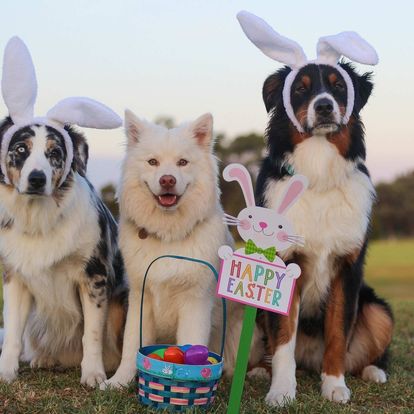As Easter approaches, households across the country are filled with the aroma of chocolate treats and festive indulgence. While many of us look forward to celebrating this joyous occasion with family and friends, it’s essential to remember that some of our favourite holiday treats can pose serious risks to our furry companions.
At Southern Cross Veterinarians, with branches conveniently located in Woodford, Bellmere, and Wamuran, we’re dedicated to ensuring the health and safety of your pets. In this article, we’ll explore the dangers of chocolate for our four-legged friends and provide tips on how to keep them safe during the Easter festivities.

Chocolate Toxicity
A Serious Concern for Pets Chocolate is a popular Easter treat for humans, but for our pets, it can be extremely toxic. The primary toxic component in chocolate is theobromine, a stimulant that is metabolized much more slowly in animals compared to humans. When ingested by dogs and cats, theobromine can accumulate to dangerous levels, leading to a range of symptoms from mild gastrointestinal upset to life-threatening toxicity.
Understanding the Risks: How Much is Too Much?
The toxicity of chocolate depends on several factors, including the type of chocolate consumed, the amount ingested, and the size and sensitivity of the pet. Dark chocolate and baking chocolate contain higher concentrations of theobromine and are therefore more dangerous than milk chocolate. Even small amounts of chocolate can be harmful to pets, with symptoms typically appearing within a few hours of ingestion.
Recognizing the Signs of Chocolate Toxicity
It’s crucial for pet owners to be able to recognize the signs of chocolate toxicity and seek veterinary care immediately if their pet has ingested chocolate. Common symptoms of chocolate poisoning in pets may include:
Vomiting Diarrhea
Increased thirst and urination
Restlessness or hyperactivity
Rapid breathing
Elevated heart rate
Muscle tremors or seizures
Collapse or unconsciousness
If you suspect that your pet has ingested chocolate or is displaying any of these symptoms, don’t hesitate to contact your veterinarian or seek emergency veterinary care.
Prevention is Key
Keeping Chocolate Out of Reach
Preventing chocolate toxicity in pets begins with keeping chocolate products safely out of reach. This means storing Easter chocolates, candies, and baked goods in secure containers or cabinets where pets cannot access them. It’s also essential to educate family members and guests about the dangers of feeding chocolate to pets, especially during holiday gatherings when treats may be more abundant.
Safe Easter Treats for Pets
While chocolate is off-limits for pets, there are plenty of pet-friendly Easter treats that you can offer to your furry companions. Consider giving your pet small pieces of cooked, unseasoned meat or vegetables as a special treat, or provide them with safe and appropriate toys or chews to keep them occupied during the festivities. Just be sure to avoid giving your pet any foods that are toxic to animals, such as grapes, raisins, onions, or xylitol.
Seeking Veterinary Care
What to Do if Your Pet Ingests Chocolate
If you suspect that your pet has ingested chocolate, it’s essential to act quickly. Contact your veterinarian or an emergency veterinary clinic immediately for guidance. Be prepared to provide information about the type and amount of chocolate ingested, as well as your pet’s current symptoms and overall health status. In some cases, your veterinarian may recommend inducing vomiting or administering activated charcoal to help prevent absorption of the toxic components of chocolate.
As we prepare to celebrate Easter with our loved ones, it’s important to be mindful of the potential dangers that chocolate poses to our pets. By understanding the risks of chocolate toxicity and taking proactive measures to keep chocolate out of reach, we can help ensure the safety and well-being of our furry companions during the holiday season.
If you have any concerns about your pet’s health or suspect that they may have ingested chocolate, don’t hesitate to contact your veterinarian for assistance. Together, we can enjoy a happy and healthy Easter with our beloved pets by our side.

